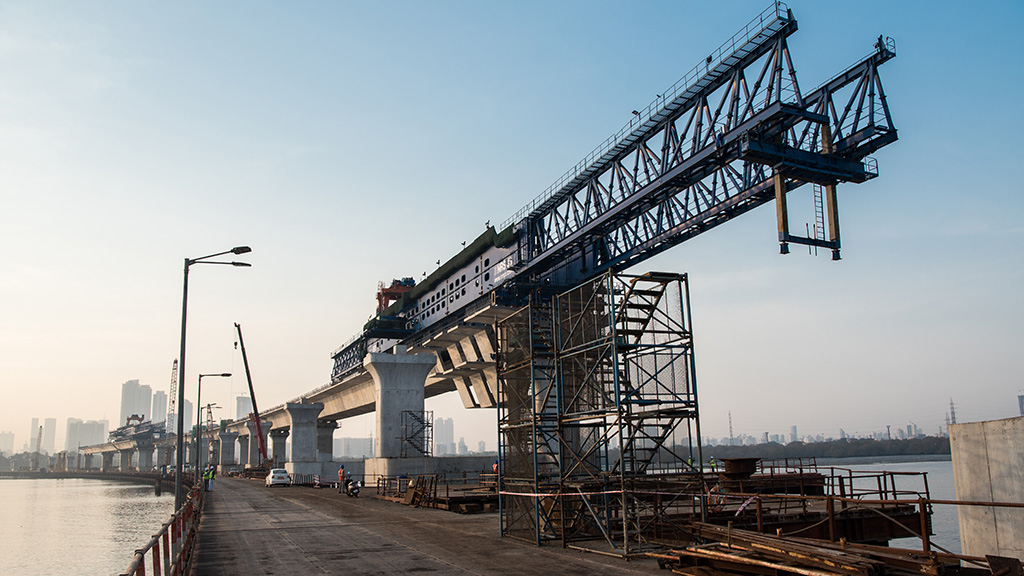India’s construction industry has reached the stage where population growth and increased GDP have secured sustainable expansion going forward.
Further implementation of infrastructure projects will have a self-propelling effect as better infrastructure will boost the country’s GDP, resulting in additional investments, both domestic and foreign, in the long run. The massive scale of current and future projects and the scarcity of both skilled and unskilled labour will likely bring technological advancement and greater efficiency to the sector over time.
India is swiftly on its way to becoming the largest country, by population, in the world. According to a report published by the United Nations’��Department of Economic and Social Affairs, its population is anticipated to grow to����in 2023, exceeding the number of people in mainland China. The accelerated population increase has resulted in meaningful GDP advancement while highlighting the need to develop the country’s infrastructure and residential real estate.
India’s infrastructure must expand and be upgraded to serve and sustain the strong population advance. New infrastructure projects, such as bridges, highways, dams, etc., will support economic development and improve living standards. The advancement of the infrastructure sector has become more important as the number of cities and villages has increased.��
According to the country’s Minister of Commerce and Industry Piyush Goyal, India is forecast to become��in the next three years. In 2023, its construction industry is anticipated to expand by +12%, reaching INR 45,907 billion (approximately US$559.8 billion).
Two of the main priorities contained in ��are an affordable housing program (PMAY) and the construction of more efficient transportation, such as improved metro roadways and upgraded railway systems. In the infrastructure sector, the government’s investment will increase by +33% this year, representing 3.3% of GDP. This will amount to US$122 billion, almost three times as much as in 2019-20. The increase in funding is evident in the number of construction projects India aims to complete.
New bridges, expressways, water transport systems and airports are in the works. Proceeding with a US$2.2 billion budget, the�� will make it possible to travel from Mumbai to Navi Mumbai in 20 minutes rather than the present two hours.
It will also serve as the link between the Mumbai-Pune Expressway and the Coastal Road. The 1.3 kilometre Chenab River Railway Bridge, the 1,350 kilometre Delhi-Mumbai Expressway, the 78 kilometre Kochi Water Metro and the Navi Mumbai International Airport are also examples of upcoming projects.
In addition, the government is directly involved in constructing highways to improve travel and commercial transportation. Union Road Transport and Highways Minister Nitin Gadkari said in 2024,��.
Completing the Bharat Mala project and the Raipur-Dhanbad economic corridor will make major contributions. The first involves construction of national highway corridors spanning 35,000 kilometres, while connecting 580 districts. The second will increase the efficiency of shipping commodities like cement, coal and steel across the country.��
Foreign investors also back the government’s plans for multiple infrastructure projects. These include US$600 million from the World Bank to Inland Waterways Development for the construction of 111 waterways to provide more efficient river transportation.
There’s also lending of US$1.2 billion from the Asian Development Bank (ADB). The ADB loans will be utilized for building roads between key areas in the state of Maharashtra, to improve roads and highways in the state of Assam and to upgrade the city of Chennai’s metro system.
The construction industry is��. However, the massive growth within the sector may be held back by��. At the same time, technological advancement could help solve this problem. The use of drones, generative AI and 3D printing can make construction more efficient and less manpower intensive.��
Booming construction in the country has increased demand for materials, including cement, copper, and steel. Contributing 7% to the global marketplace, India is the second-largest cement producer worldwide. Recently,����due to the expansion of the housing sector, which consumes around 60% of the cement produced in the country. The demand for copper has also been growing, with a +15% hike in imports year to date.
India’s steel production has increased by +6% over the last decade. The World Steel Association anticipates��India will have a leading role in increasing steel production��worldwide. From a demand perspective, the country’s steel consumption is anticipated to be +11% this year versus 2022.
The need for commodities in India is only projected to grow further due to the robust development of the infrastructure sector and upcoming new construction projects.��
Dmytro Konovalov has over 10 years of experience in equity research and analysis for global markets at leading international financial institutions.



Recent Comments
comments for this post are closed